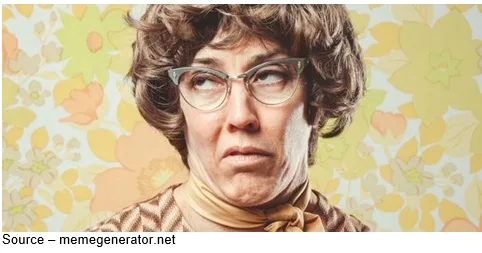Tough Times Produce New Creative Content Opportunies
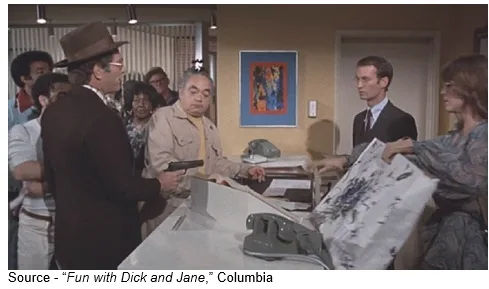
Well, we did it.
We bought a 2021 calendar.
Oh, come on, for gawd sake!
We hardly used last year’s and if this year was going to suck like 2020, we figured why waste the money?
Recycle!
Despite all the corporate blood-letting in the M&E industry, creative content development, production and distribution survived and is ready to do what it’s supposed to do … serve the consumer.
Maybe the reset wasn’t all that bad.
When Universal announced they were taking Trolls World Tour DTC last April, it was almost as though the company’s parent, NBCUniversal’s parent said, “If this sucker goes south it’s her fault but if it proves successful we’re taking credit for it.”
Donna Langley, chairman of Universal Filmed Entertainment Group, took all of the flack when the move was announced but when the test proved successful ($100M + in streaming sales) Jeff Shell, head of parent NBCUniversal, proudly said “The results for‘Trolls World Tour’ have exceeded our expectations and demonstrated the viability of PVOD.”
Adam Aron, CEO of AMC, probably called NBCUniversal and Donna about every name in the book before simply saying they’re dead to us.
NATO (National Association of Theatre Owners) heartily agreed.
Of course, like any good movie, the three made up and are typical Hollywood BFFs.
You see, AMC and NATO looked around and saw Covid-19 sorta’ took away all of their bargaining chips.
John Stankey, head of AT&T and WarnerMedia, and Warner’s CEO Jason Kilar didn’t want that kind drama so they held their tentpole, Tenet, for theaters.
They said they respected the importance of seeing a film the way it’s supposed to be seen and were committed to honoring yesteryear’s status quo 90-day window.
Tenet scraped in an estimated $10M in ticket sales during its debut (which had to be split with theaters).
Not a lot of seats in the seats for a film they dropped $200M on!
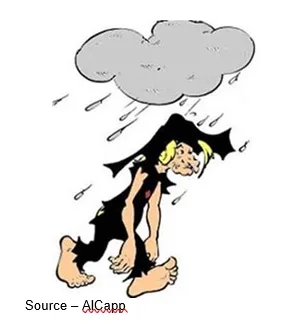 It probably didn’t help AT&T reduce the $108B plus debt it took on when Randall Stephenson (then CEO) decided he wanted to be in the movie business … too.
It probably didn’t help AT&T reduce the $108B plus debt it took on when Randall Stephenson (then CEO) decided he wanted to be in the movie business … too.
Deciding that they wanted to control it all (from creation to delivery) couldn’t have come at a worse time.
Ever since the studio system was broken up by a 1948 Supreme Court ruling, there has been a lot of tension between theatrical exhibition and studio distribution.
But nothing much changed.
Even though they produced content for them, Hollywood viewed Netflix as coopetition (competitive competition) when it started streaming back in 2007.
Amazon Prime became an added pain a year later when they began offering SVOD service.
In addition, Amazon’s Bezos leveraged his 1998 purchase of IMDb, the online database of everything/everyone in the industry and added IMDd TV to the mix last year.
Despite the two firms steady investment in new, original content, the AMPAS (Academy of Motion Picture Arts and Sciences) “knew” they weren’t worthy of the industry’s highest honor, an Oscar, because real movies appeared first in a theater and then with lesser D2C (pay TV, SVOD, AVOD) services.
Yeah, the rule got bent over time until BAM! theaters shut down.

Pandemic reality set in and every studio/content owner suddenly realized their usual means of determining a project was a hit and hypothetically get a fast ROI on their over-the-top investment was a lot of smoke … a film that sells $200M of tickets in the theater usually returns them $100M.
And with theater chains closed and spooky even when they reopen, they had to “adjust” their business model and reinvent themselves.
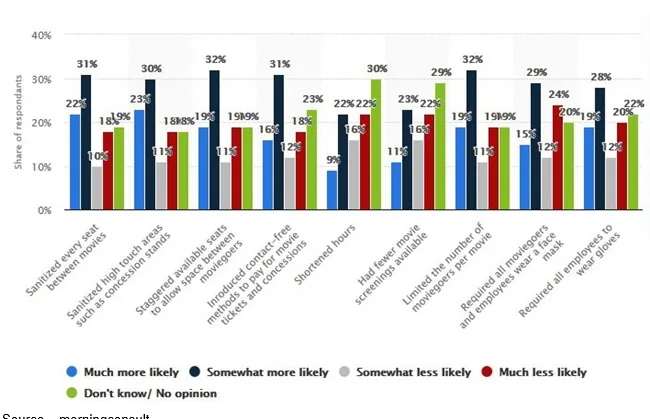
M&E firms shifted to direct-to-consumer and subscription-based platforms needed different creative work, programming, marketing, distribution and sales expertise.
Every studio quickly set up a streaming service:
- Disney – Disney+, Hulu
- Comcast – NBCUniversal, Peacock
- ViacomCBS – CBSAllAccess, Pluto TV
- Fox – Tubi TV,
- Sony – Crackle
- WarnerMedia – HBO Max
- BBC/ITV – BritBox
- Foxtel – Kayo Sports, Foxtel Now
- KBS, MBC, SBC – Wavve
- Star Network – Hotstar
- Balaji – ALTBalaji
- Viacom 18 – Voot
You get the idea…everyone!
And it also meant every organization had to reduce staffing in almost every area to address the new normal.
It was the winter of discontent for M&E workers.
No level of seniority has been spared from the wave of layoffs.
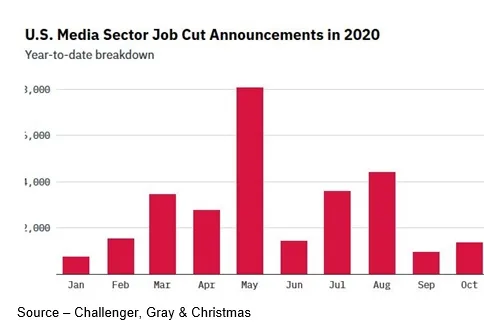
The layoffs were a painful but a necessary byproduct of change.
Arguably AMC’s Aaron faced the reality of the new industry model first when he negotiated with Universal to replace the sacred theatrical window and establish a new guideline that benefitted both parties in the new entertainment world.
Depending on the individual negotiations tentpoles can be released to PVOD the same or 17 days following the theatrical release.
And the theatrical chain would receive a portion of the streaming proceeds for a designated period (financial/time to be privately negotiated).
Now that’s an intelligent, professional discussion that benefits everyone in the M&E ecosystem…especially the consumer.
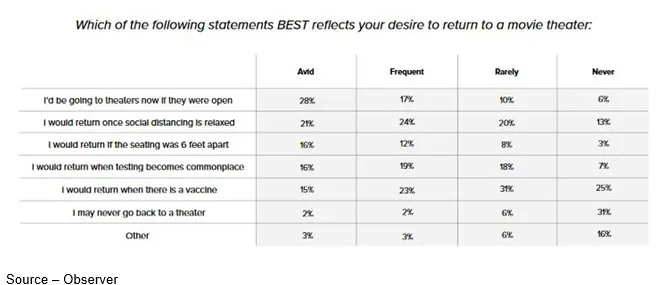
Avid theater attendees are going to return as they determine the time is right.
Frequent ticket buyers will be a little reticent but will return.
Folks who seldom or never bought expensive popcorn are going to follow their new normal viewing habits and be very glad – and willing – to catch the new hot films early (PVOD) or wait until it’s available on their existing SVOD or AVOD service.
Some industry observers have expressed the doom of big-budget spectacles like Tenet, Wonder Woman 1984, Fast and Furious 9, M:I 8/9, Matrix 4, Avatar, Top Gun: Maverick and other mindboggling series and franchises will disappear because audiences won’t flock to movie theaters to see the latest and greatest in the franchise but be perfectly watching it at their convenience.
BS!
In fact, there might be more and greater variety.
Sure; DC Marvel and others will base their script, director and actor selection less on what they brought in last time but more in the data behind the numbers.
You know, follow the lead of Netflix ad Amazon Prime and increasingly, Apple and Disney to determine more precisely what content is going to capture the interest, eyeballs and billfold of people and in which countries of the world will the project draw people into theaters and to their service.
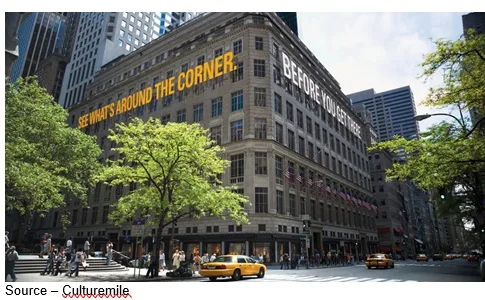
Sure, that means fewer people who understand marketing and distribution and more people who understand how to capture, analyze and interpret data.
It also means a new talent of how to translate that data into a script and visual story that folks not only want to see but … gotta see!
Yeah, that’s right.
Suddenly the control of what, how and when people want to watch a project is put firmly into the hands of the audience.
But that doesn’t spell the end of the film/series/TV show industry.
Instead, we believe it will breath new life and vitality into the content creation industry because script writers, directors, producers, shooters, editors, FX, audio and the rest of the team will be building new, better visual stories people will actually want to see.
And sure, ticket/subscription numbers are what keep Hastings, Bezos, Sarandos, Chapek, Stankey, Kilar and other industry CEOs and their shareholders happy; but for the rest of the people in the industry, it’s about feeding the viewer’s interest, imagination and mental appetite … at least for an hour or two.
The change was uncomfortable for everyone in the industry.
But it’s new, different, exciting and we believe/hope it’s more open to change at every level.
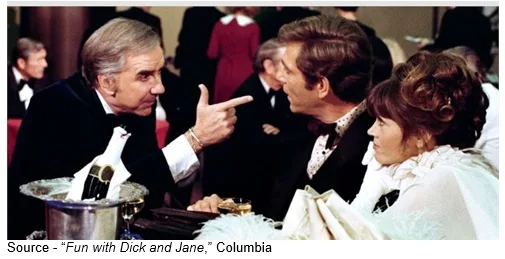 Tomorrow’s video storytelling industry will be more open to change and differences.
Tomorrow’s video storytelling industry will be more open to change and differences.
We know and have seen what no longer works, and those who temporarily run the organizations have seen what happens when they are too myopic.
The smart ones will be open like Charlie Blanchard in Fun with Dick and Jane, when he said, “You can tell me anything.” Especially when you have the data to back you up and a clean, fresh calendar.
# # #
Andy Marken – [email protected] – is an author of more than 700 articles on management, marketing, communications, industry trends in media & entertainment, consumer electronics, software and applications. An internationally recognized marketing/communications consultant with a broad range of technical and industry expertise especially in storage, storage management and film/video production fields; he has an extended range of relationships with business, industry trade press, online media and industry analysts/consultants.
